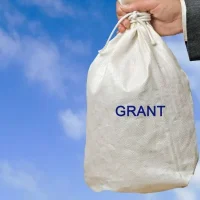Identifying potential donors is a critical step in the journey of social enterprise development. Social enterprises often operate at the intersection of business and social impact, requiring a unique blend of funding sources to sustain their operations and achieve their missions. Without a clear understanding of who the potential donors are, organizations may struggle to secure the necessary resources to grow and thrive.
This process is not merely about finding financial backers; it is about aligning with individuals and organizations that share a common vision for social change. By identifying the right donors, social enterprises can ensure that their initiatives are supported by those who are genuinely invested in their success. Moreover, recognizing the importance of donor identification extends beyond immediate funding needs.
It lays the groundwork for long-term sustainability and growth. When social enterprises engage with donors who resonate with their mission, they create opportunities for collaboration and innovation. These relationships can lead to additional resources, mentorship, and strategic partnerships that enhance the overall impact of the enterprise.
In essence, identifying donors is not just a transactional process; it is a foundational element that can propel social enterprises toward achieving their goals and maximizing their social impact.
Researching Potential Donors and Their Priorities
Once the importance of identifying donors is established, the next step involves thorough research into potential donors and their priorities. This process requires a strategic approach to understanding who might be interested in supporting your social enterprise. Start by examining foundations, corporations, and individual philanthropists that have a history of funding initiatives similar to yours.
Utilize online databases, such as Guidestar or Foundation Center, to gather information about their funding history, areas of interest, and application processes. This research will help you create a targeted list of potential donors who align with your mission. In addition to traditional funding sources, consider exploring non-traditional avenues such as crowdfunding platforms or community-based funding initiatives.
These platforms often attract individuals who are passionate about specific causes and are willing to contribute smaller amounts that can collectively make a significant impact. Understanding the motivations behind these contributions can help tailor your outreach efforts. For instance, if a donor prioritizes environmental sustainability, highlighting how your social enterprise contributes to this cause can make your proposal more compelling.
By aligning your mission with the priorities of potential donors, you increase the likelihood of securing their support.
Building Relationships with Potential Donors
Building relationships with potential donors is an essential aspect of successful fundraising for social enterprises. This process goes beyond simply asking for money; it involves cultivating genuine connections that foster trust and collaboration. Start by engaging with potential donors through networking events, conferences, or community gatherings where they are likely to be present.
Take the time to learn about their interests and values, and share your story in a way that resonates with them. Authenticity is key; donors are more likely to support organizations that they feel a personal connection to. Once initial contact is made, it is crucial to maintain ongoing communication with potential donors.
Regular updates about your social enterprise’s progress, challenges, and successes can keep them engaged and invested in your mission. Consider sending newsletters or personalized emails that highlight specific achievements or upcoming projects. Additionally, invite them to visit your organization or participate in events where they can see firsthand the impact of their support.
By fostering these relationships over time, you create a network of advocates who are not only willing to provide financial support but also serve as ambassadors for your cause.
Communicating the Impact of Social Enterprise Development
Effectively communicating the impact of your social enterprise development is vital for attracting and retaining donor support. Donors want to know how their contributions will make a difference in the communities you serve. To convey this impact, utilize storytelling techniques that highlight real-life examples of individuals or communities positively affected by your work.
Personal stories can evoke emotions and create a deeper connection between donors and your mission. For instance, if your social enterprise provides job training for marginalized populations, share success stories of individuals who have transformed their lives through your programs. In addition to storytelling, leverage data and metrics to demonstrate the tangible outcomes of your initiatives.
Create impact reports that outline key performance indicators (KPIs) related to your social enterprise’s goals. This could include statistics on job placements, community engagement levels, or environmental improvements resulting from your work. Presenting this information in an accessible format—such as infographics or short videos—can enhance understanding and retention among potential donors.
By combining emotional narratives with concrete data, you create a compelling case for support that resonates with both heart and mind.
Leveraging Networks and Partnerships to Identify Donors
Leveraging existing networks and partnerships can significantly enhance your efforts in identifying potential donors for your social enterprise. Start by assessing your current connections—board members, volunteers, community leaders, and other stakeholders may have valuable insights or introductions to potential funding sources. Encourage these individuals to tap into their networks on behalf of your organization.
A warm introduction often carries more weight than a cold outreach, increasing the likelihood of engagement from potential donors. Additionally, consider forming strategic partnerships with other organizations that share similar goals or target audiences. Collaborating on projects or initiatives can not only amplify your impact but also expand your reach within donor communities.
For example, if you partner with an organization focused on education while your social enterprise addresses employment training, you can jointly approach funders interested in workforce development initiatives. By pooling resources and expertise, you create a stronger case for support while broadening your donor base.
Implementing a Donor Identification Strategy
Setting Clear Fundraising Goals
Establish clear goals for your fundraising efforts based on your social enterprise’s needs and objectives. Determine how much funding you require and identify specific projects or initiatives that will benefit from donor support. This clarity will guide your outreach efforts and help you tailor your messaging to resonate with different donor segments.
Refining Your Strategy
Regularly review and update your donor identification strategy based on feedback and results from previous outreach efforts. Analyze which approaches have been most successful in securing funding and adjust your tactics accordingly. By continuously refining your strategy, you can enhance your effectiveness in identifying and engaging potential donors while ensuring that your social enterprise remains focused on its mission of creating positive social change.
Securing Resources for Lasting Impact
In conclusion, identifying donors for social enterprise development is a multifaceted process that requires strategic research, relationship building, effective communication, leveraging networks, and implementing structured strategies. By understanding the importance of this process and taking actionable steps toward donor identification, social enterprises can secure the necessary resources to drive their missions forward and create lasting impact in their communities.









































